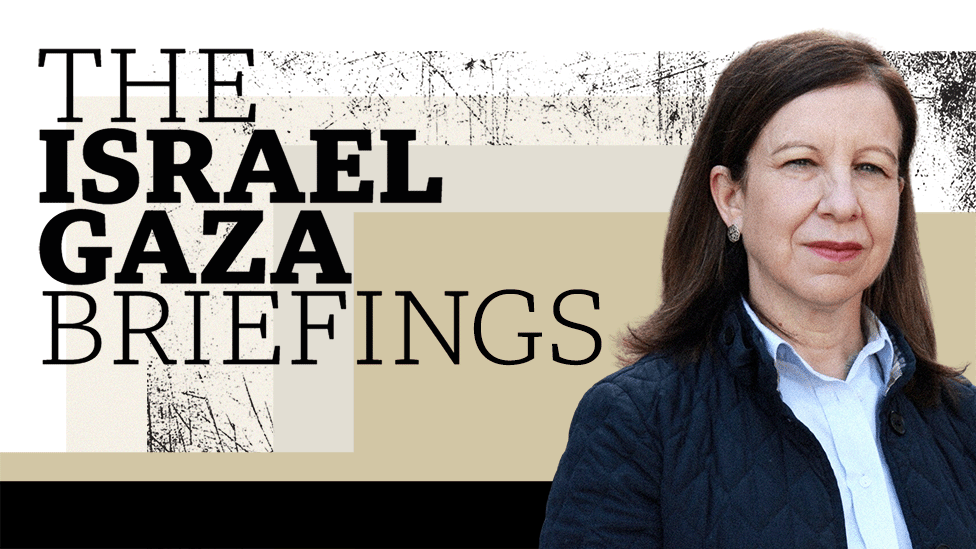US drone attack: What is Tower 22 and why are US troops in Jordan?
- Published
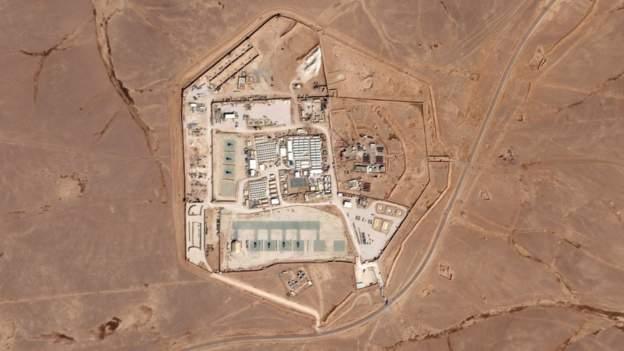
The attack targeted Tower 22, a US base in Jordan
An Iran-backed militia group has said it was responsible for a drone strike at a US military base in Jordan that killed three American troops.
At least 34 other service members were injured in the attack at the base, known as Tower 22. The White House blamed Iran and vowed a "very consequential response".
But Iran called the accusation "baseless" and said it was "not involved in the decision-making of resistance groups".
US officials have sought for weeks to prevent high tensions on several fronts in the region from boiling over into a wider war.
But Sunday marked the first time US soldiers had been killed by enemy fire in the region since Hamas's 7 October attack on Israel.
Where is the Tower 22 military base?
The attack targeted a US military base known as Tower 22 in north-eastern Jordan, near the Syrian border.
A defence official told the BBC's US partner CBS News that the enemy drone came in "very low and very slow" at the same time that an American drone was returning to the base from a mission.
The auto-response features of the base's air defence system were turned off so as not to shoot down the US drone, the official said.
As a result, there was little to no warning for troops stationed at Tower 22, who were reportedly still in their sleeping quarters when the drone arrived.
There are about 350 US forces stationed at the base, conducting key functions including supporting the coalition to defeat Islamic State, according to US Central Command (CentCom).
Among those injured, eight service members were medically evacuated from Jordan to receive higher-level care, but they are in stable condition, CentCom said.
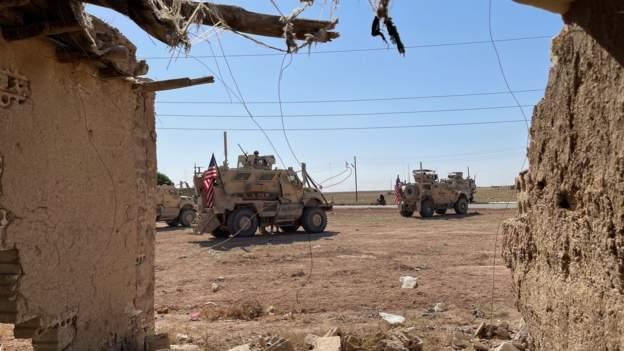
Why are there US bases in the Middle East?
The base which was hit in a deadly drone attack in a north-west corner of Jordan is one of more than a dozen where US military personnel operate across Iraq, Jordan and Syria.
In recent months, these bases - ranging in size from a military outpost such as Tower 22, which was hit in Jordan, to al-Asad air base in western Iraq - have been attacked by militias trained, funded and equipped by Iran.
There are about 3,000 US troops based in Jordan, a key US ally, and 2,500 in Iraq - there at the invitation of the Iraqi government as part of a US-led coalition to prevent a resurgence of the jihadist Islamic State group, which still has a presence there after being routed in 2017.
There are also about 900 US personnel in Syria, officially there to support its anti-IS ally the Kurdish-led Syrian Democratic Forces in Syria's semi-autonomous north-east region. The Syria government opposes the US presence in its country, calling it an occupation.
The US also maintains many more bases further afield across the Middle East, including three major air bases in the Gulf and a port in Bahrain which serves as the headquarters of the US Naval Forces Central Command and the US Fifth Fleet.
What is the Islamic Resistance in Iraq?
The Islamic Resistance in Iraq said it was responsible for the attack in a statement posted to Telegram on Sunday.
It said it targeted three US bases in Syria and Jordan - Shaddadi, Rukban and Tanf - as well as an Israeli oil facility in the Mediterranean.
The group emerged in late 2023, right after the beginning of Israel's bombardment in Gaza in response to Hamas's attack on Israel on 7 October.
It consists of several Iran-affiliated militias operating in Iraq and has claimed other attacks against US forces in recent weeks.
"Islamic Resistance in Iraq" is believed to be an umbrella term for various Shia militia groups such as Kataib Hezbollah, Nujaba and Kataib Sayyid al-Shuhada, that have a long history of targeting US bases in Iraq and Syria.
Tehran refers to its networks of proxies and allied groups in the region as the "Axis of Resistance", a kind of forward defence against its enemies.
The point of creating these ghost groups is to make it difficult for Washington to pin the attacks on a specific culprit.
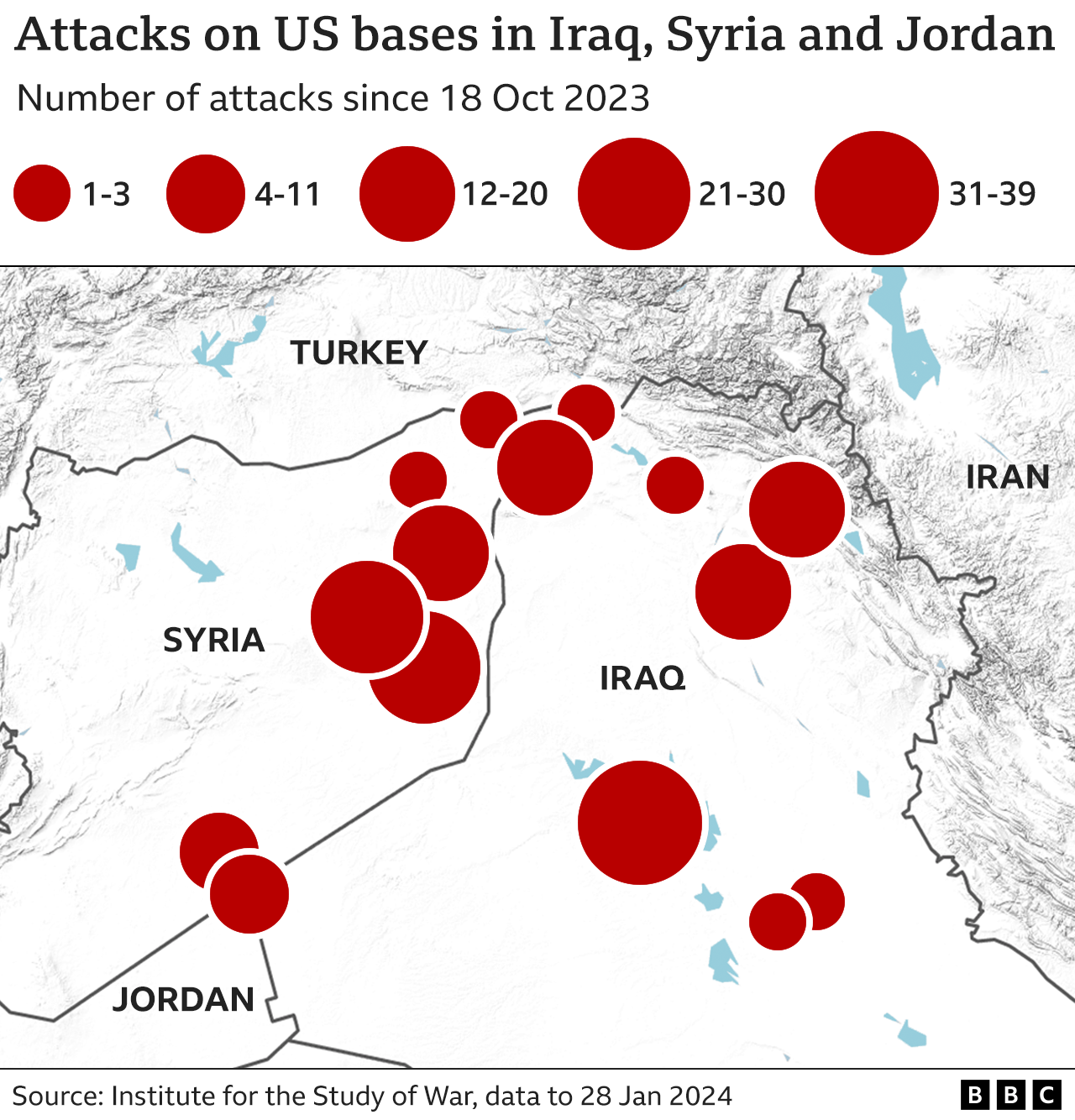
How will the US respond?
President Joe Biden said the "despicable and wholly unjust" attacks on Sunday had been carried out by "radical Iran-backed militant groups".
He also vowed the US "will hold all those responsible to account at a time and manner of our choosing".
All eyes are now on the White House, which is under pressure to respond forcefully to the attack, with some lawmakers and current and former officials calling for strikes against Iranian targets.
Mr Biden's dilemma is how to retaliate, who to hit and where to hit. The big question is whether the US can deter attacks by hitting back hard or whether it will add fuel to a growing fire in the region.
Mick Mulroy, a former deputy assistant secretary of defence for the Middle East, told the BBC he believes that the US should respond with "more force than we have used to date".
"It's been clear that the US does not want this war in Gaza to expand in the region. It's also been clear that Iran does want it to expand," he said. "The only thing they understand is force. It's time to use it."
He added: "I believe that even targets inside Iran are being included as options to the White House from the Pentagon."
UK Prime Minister Rishi Sunak has urged Iran to de-escalate tensions in the region.
Related topics
- Published29 January 2024
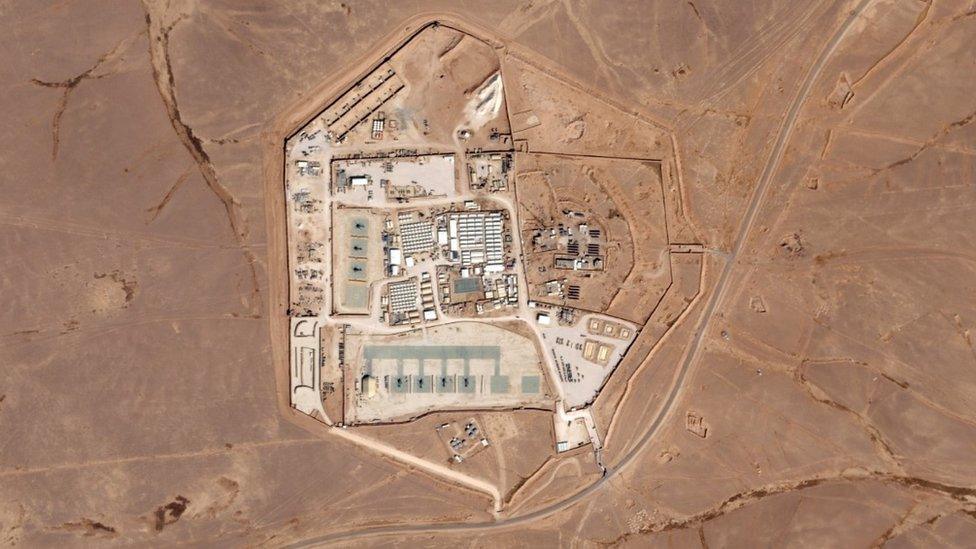
- Published29 January 2024
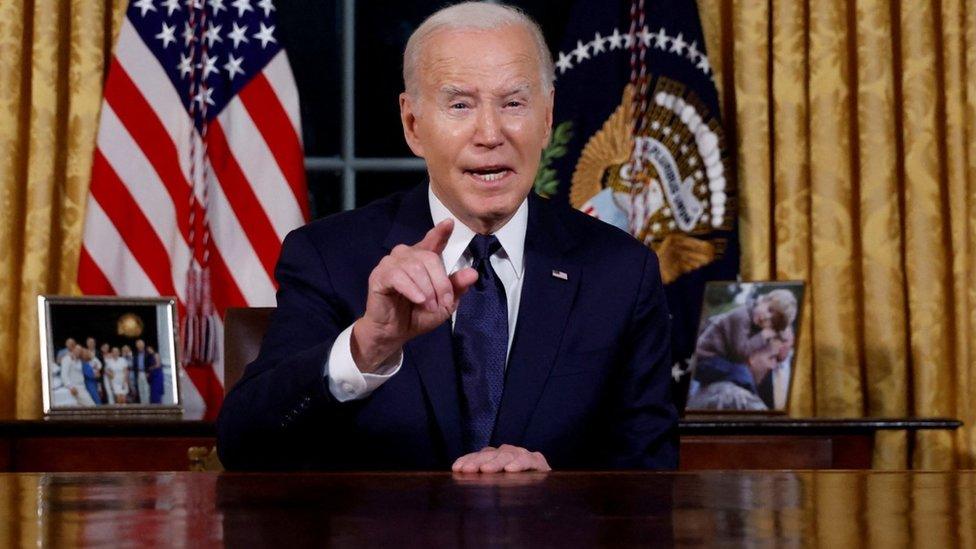
- Published20 January 2024
